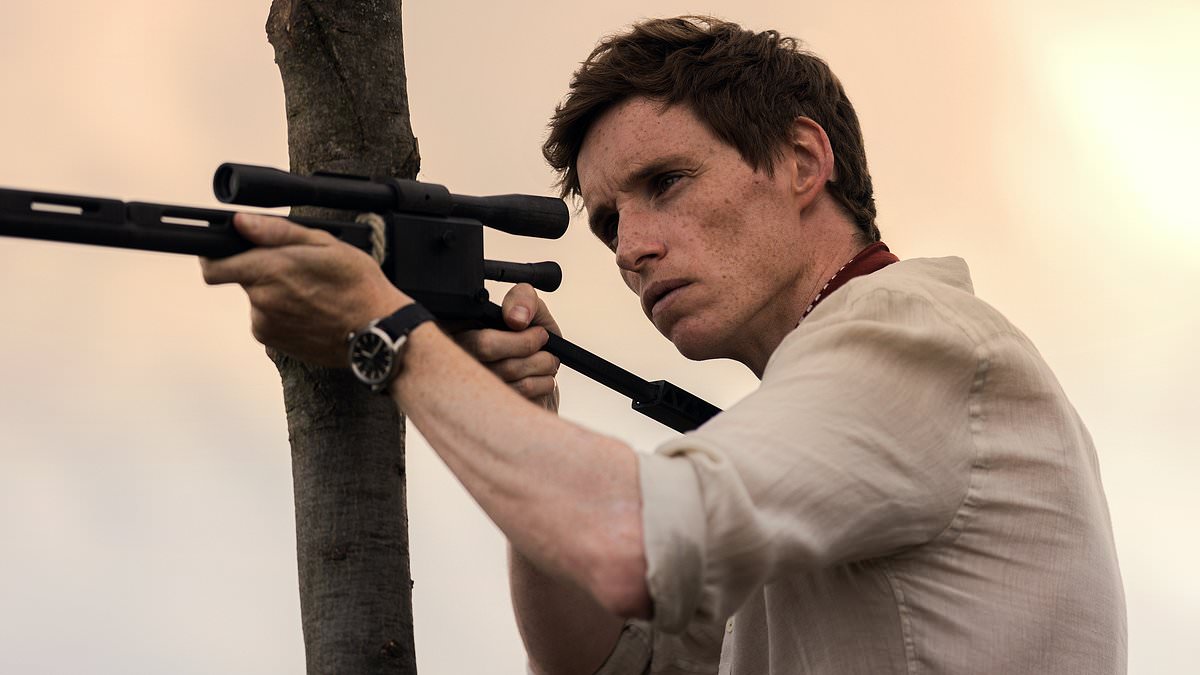Anna describes her crisis at work as ‘death by a thousand cuts’. There was no single catastrophe that shattered her confidence, but instead constant, unrelenting microaggressions punctuated by random outbursts.
Simply put, every day was hell.
She had a high-paying job at Ernst & Young, one of the world’s Big Four accounting and professional services firms, but found herself scared of going to work and on medication for panic attacks.
During her time at EY, Anna and her colleagues suffered under two workplace bullies – a notorious female manager and a director who once told her, ‘I make people cry’.
The toxic behaviour was an open secret, with management even bringing in support workers at one stage because of ‘wellbeing concerns’ for the team.
She eventually broke down and ended up on anxiety drugs.
Anna, who spoke under a pseudonym to preserve her professional reputation, is not alone. Joydeep Hor, an employment lawyer with 27 years’ experience, has seen countless workers traumatised by their ‘respectable’ white-collar professions.
To my surprise, he tells me that jobs requiring a university degree are particularly hazardous to your health – which flies in the face of conventional wisdom that you’re most likely to suffer an injury on a worksite.
And it’s not necessarily the long hours or arduous work that cause lasting, severe mental health problems, but rather ‘common themes across certain professions’.
‘I’ve had clients, literally, in every industry that you can possibly think of,’ he says.

Employment lawyer Joydeep Hor says people with underlying mental health problems are entering fields that exacerbate their problems, especially in high-pressure roles (stock image)

Mental health at work is in the spotlight after 27-year-old EY audit and assurance specialist Aishwarya Venkatachalam last year plunged to her death from an 11th floor terrace of the firm’s George Street tower block in Sydney
Career red flags for mental health
Entry-level jobs with a ‘long journey ahead of you’
Think companies where junior staff are expected to work long hours and suffer through brutal management for years until they are promoted to a more comfortable pay grade. For some, there is no light at the end of the tunnel.
Careers that fall under this umbrella include law and professional services.
High-powered jobs where clients are billed by the hour
Boasting of how much your firm charges clients by the hour can make you seem like a big shot – but it can also put enormous pressure on those tasked with doing the work.
When you professional worth is linked to your hours clocked, as opposed to your actual output, you risk working far longer than you normally would, which can lead to career burnout.
Middle management – the most dangerous place on the career ladder
If you manage people and also have a manager, you’re in a stress sandwich that can be a recipe for disaster.
It’s often assumed that workers lower on the corporate ladder have it tougher than their bosses, but those in middle management struggle, too.
Copping it from senior executives and also having to manage underperforming staff is a perfect storm for burnout, stress and anxiety.
Mental health at work has been in the spotlight ever since 27-year-old EY audit and assurance specialist Aishwarya Venkatachalam, a newlywed, in 2022 plunged to her death from an 11th floor terrace of the firm’s George Street tower block in Sydney.
The tragedy occurred after midnight and a work event – suggesting she was suffering from burnout or bullying.
Ironically, her death occurred in the same month Safe Work Australia published a new manual titled, ‘Model Code of Practice: Managing psychosocial hazards at work.’
Mr Hor, the founder and managing principal of People + Culture Strategies, in his legal career has represented high-profile clients, ranging from former Wallabies fullback Israel Folau to former TV newsreader Jessica Rowe.
While not commenting specifically on the EY tragedy, Mr Hor says people with underlying mental health problems are entering fields that exacerbate their problems, especially in high-pressure roles.
‘People are entering into professions with underlying mental health conditions like bipolar disorder or forms of anxiety – whatever it might be,’ he tells me.
‘What they are not doing is understanding through the engagement of appropriate, professional advice and support.

Joydeep Hor, who has been an employment lawyer for 27 years, says white-collar jobs requiring a university degree are particularly hazardous
‘They choose to throw themselves into a highly demanding, highly pressurised work environment and it’s just not a good fit in terms of what their underlying, mental health conditions are.
‘In my observation, they’re the real things that can happen.
‘I don’t think it’s about a person starts in a role – no issues, no underlying causes – then finding just because of the work they’re doing, that’s what’s responsible for them developing a mental health condition or taking their own life.’
Safe Work Australia published a new manual on ‘managing psychosocial hazards at work’ in August 2022, the very month Aishwarya Venkatachalam, an Indian national, plunged to her death in Sydney.
Workplace human resources officers in April 2023 adopted a new code of practice to manage psychosocial hazards at work, defined as interactions between employees that can affect mental health and wellbeing.
Australian HR Institute chief executive Sarah McCann-Bartlett tells me this code of practice means employers now have a responsibility to ‘provide interventions and support to reduce and manage work stress’.
This means workplaces have an obligation to refer struggling staff for counselling – known in the human resources sector as employee assistance programs.
‘It’s vital that HR professionals and people managers – who we must recognise are not mental health professionals – ensure a workplace where psychosocial hazards are managed appropriately, and can understand how to recognise the signs that additional help may be required,’ Ms McCann-Bartlett says.
Workplace hierarchies
Mr Hor, a solicitor, says workplace hierarchies are particularly prevalent in office-based professions like law, accounting and professional services, and this is a key reason for more mental health problems.
‘Organisations and industries where there are established hierarchies and established ways of working and structures where, when you start, you know that you’ve got a long, long journey ahead of you,’ he says.
‘Those who are entering the profession are going to find that they’re often talked down to, they’re often made to feel inadequate, they’re often made to feel that there’s a lot of things that they’re not doing right.’
Former sex discrimination commissioner Elizabeth Broderick, who is also a lawyer, wrote a report for EY in the wake of Ms Venkatachalam’s death.
She interviewed staff who told her the pressure from an overbearing manager had led to some suffering from anxiety problems.

Workplace hierarchies are particularly prevalent in office-based professions like law, accounting and professional services, and are a key reason for more mental health problems
‘You can’t really afford to be sick or to have a bad day at work because you’re still kind of seen as weak and get a bit isolated, and then you are playing catch up on your performance indicators,’ the report stated.
EY’s full response
The tragic death of our colleague Aishwarya Venket saddened and shocked people across our organisation, and was a catalyst for EY Oceania to understand the workplace experiences of our people more deeply. We commissioned Elizabeth Broderick & Co (EB&Co.) to undertake an independent and comprehensive review into our workplace culture in September 2022.
Over a year on from the release of the EB&Co. report, we’ve made strong progress addressing the recommendations we accepted in July 2023.
Work has commenced on all the recommendations and initiatives – nearly a third are near completion, and most are progressing on track. Progress has been overseen by a taskforce comprising a diverse team from across the business.
The taskforce examined the learnings from the report and laid out the principles and framework for action. We are now actively actioning the recommendations and delivering progress on our commitment to building a culture of sustainable work, safety, and inclusion.
This first year was a critical foundational year where we strengthened our complaints process, created and strengthened listening channels and exited leaders who did not hold up to our behavioural expectations. We reviewed how we work, ways to improve how we track and manage time, and developed and rolled out leadership feedback and reflection sessions across 1,400 of our leaders. Over 700 of our people came forward to participate in our pilots and the taskforce.
We’re committed to reporting on our progress in delivering the recommendations of the EB&Co. report each year through our Value Realised Scorecard, published annually on our website. The FY24 Value Realised Scorecard will be published in coming weeks.
‘My new manager started screaming at me in a meeting because I was two minutes late, ‘if you aren’t ready at 9.30 what are you doing?’. The next morning, I was so anxious and ended up being anxious every day.’
An EY spokeswoman says they have made ‘strong progress addressing the recommendations we accepted in July 2023’ from the Broderick report.
‘The tragic death of our colleague Aishwarya Venket saddened and shocked people across our organisation, and was a catalyst for EY Oceania to understand the workplace experiences of our people more deeply.’
Worth measured by billing clients
Those in the legal, accounting and professional services and management consultancy industries are also expected to make their firm money by billing clients by the hour.
‘That’s most commonly seen in professional services, you do see it in organisations where people are measured by how much they bill or charge,’ Mr Hor says.
‘So, often, that sense of worth is linked to the hours that you do.’
He argues there are fewer mental health problems in the tech sector because professionals there are measured by their creative output, not time spent in the office or with clients.
‘You contrast that with say, tech industries, where it’s not about the hours you are doing, it’s about your contribution being measured through creativity,’ Mr Hor adds.
‘It’s not impossible that someone’s going to develop a mental health issue but there’s a lot more agility in those types of industries.’
Managers can be the worst offenders – but they also suffer
American payroll company UKG this year released a new report showing seven in 10 workers said their managers had as much of an effect on their mental health as their spouse.
While this leads to the natural conclusion that having bad manager equals poor mental health for employees, Mr Hor, who provides workplace training for managers, stresses that middle-tier bosses often have a hard time, too.
‘Managers are increasingly read the riot act by other people within their organisation and people outside the organisation,’ he says.
Managers are often fearful of giving feedback to underperforming staff, he adds.
Mr Hor notes people battling mental health are often reluctant to disclose their weaknesses, which in turn makes life even harder for their managers.
‘A lot of people are going to be uncomfortable talking about it, being fully transparent in relation to their mental health challenges for fear it might lead to a situation of them getting less work or being given less opportunities,’ he says.
‘In fairness to management, you can only take steps if you know that there are steps that need to be taken and if people are not going to open up about certain things, then that’s probably something that will not end well.’
Workplaces are now increasingly focusing on mental health, including RU OK? Day activities.
‘It’s important that employers continue to do that,’ he notes.
‘The precise impact of that may not be seen immediately but they are good things to keep the narrative around mental health management fresh.’

Mr Hor, who provides workplace training for managers, says mid-tier bosses often have a hard time too because they cop it from both sides (stock image)
The profession that breeds a negative mindset
Legal professionals are trained to see flaws in the arguments of their adversaries. It’s a vital skill for their job, but could end up being their undoing.
Mr Hor says the very nature of their occupation leads to focusing on the negative rather than finding answers to problems, which can lead to mental health problems.
He adds: ‘Lawyers are ingrained in this negative mindset and find it impossible to adjust to a more solutions mindset.’
If this story has raised issues with you, help is available by calling Beyond Blue on 1300 22 4636 or Life Line on 13 11 14










